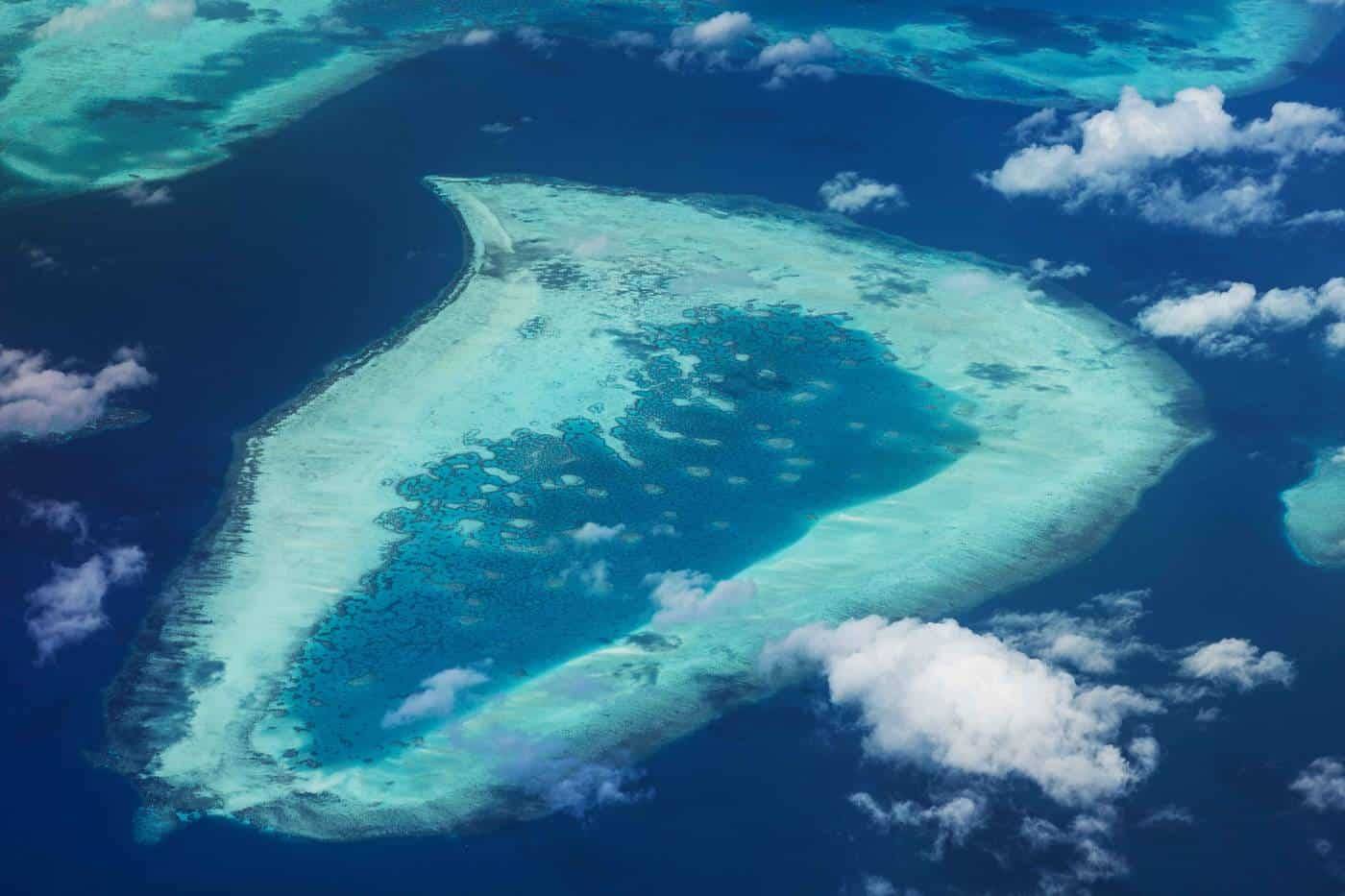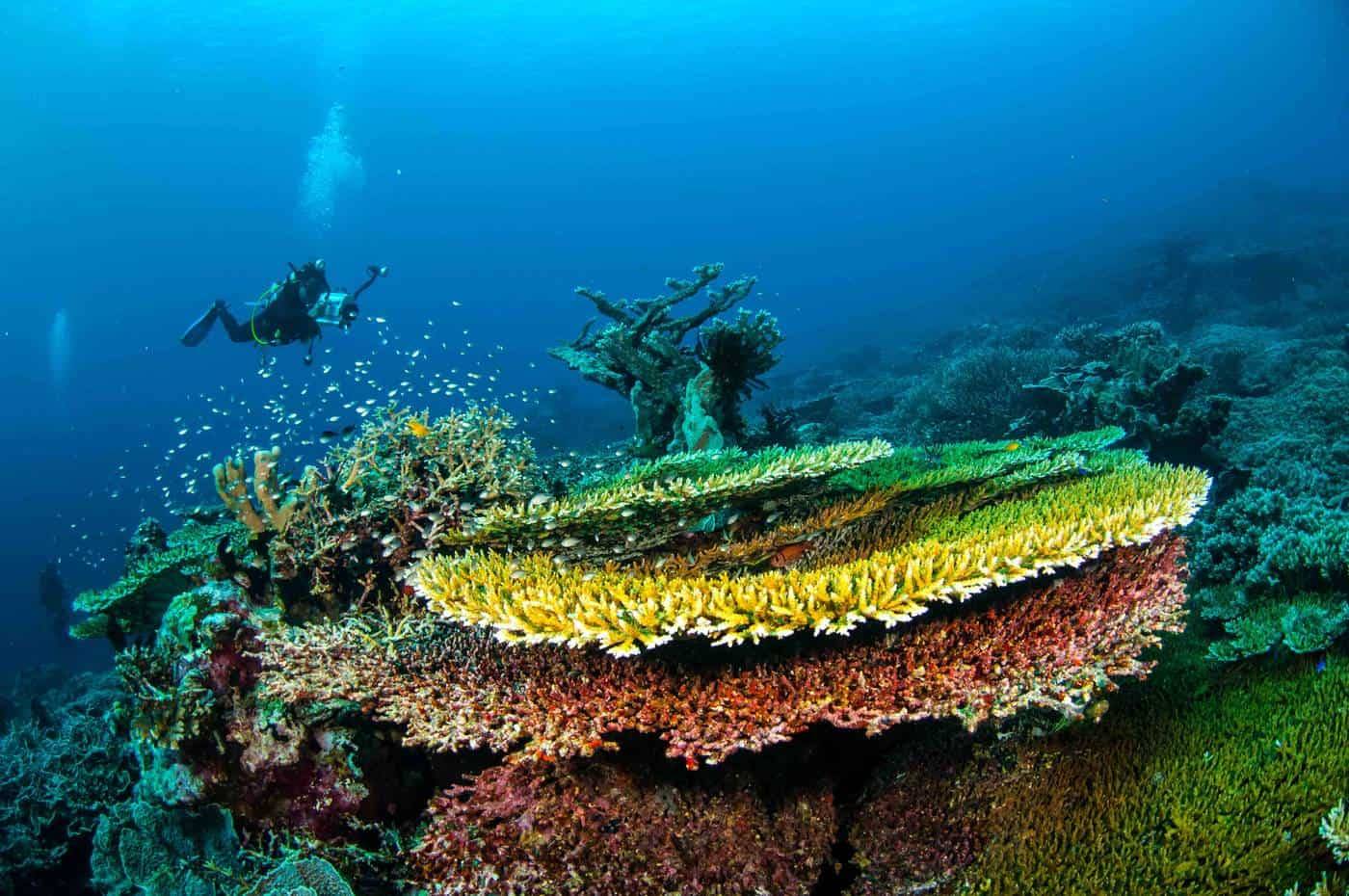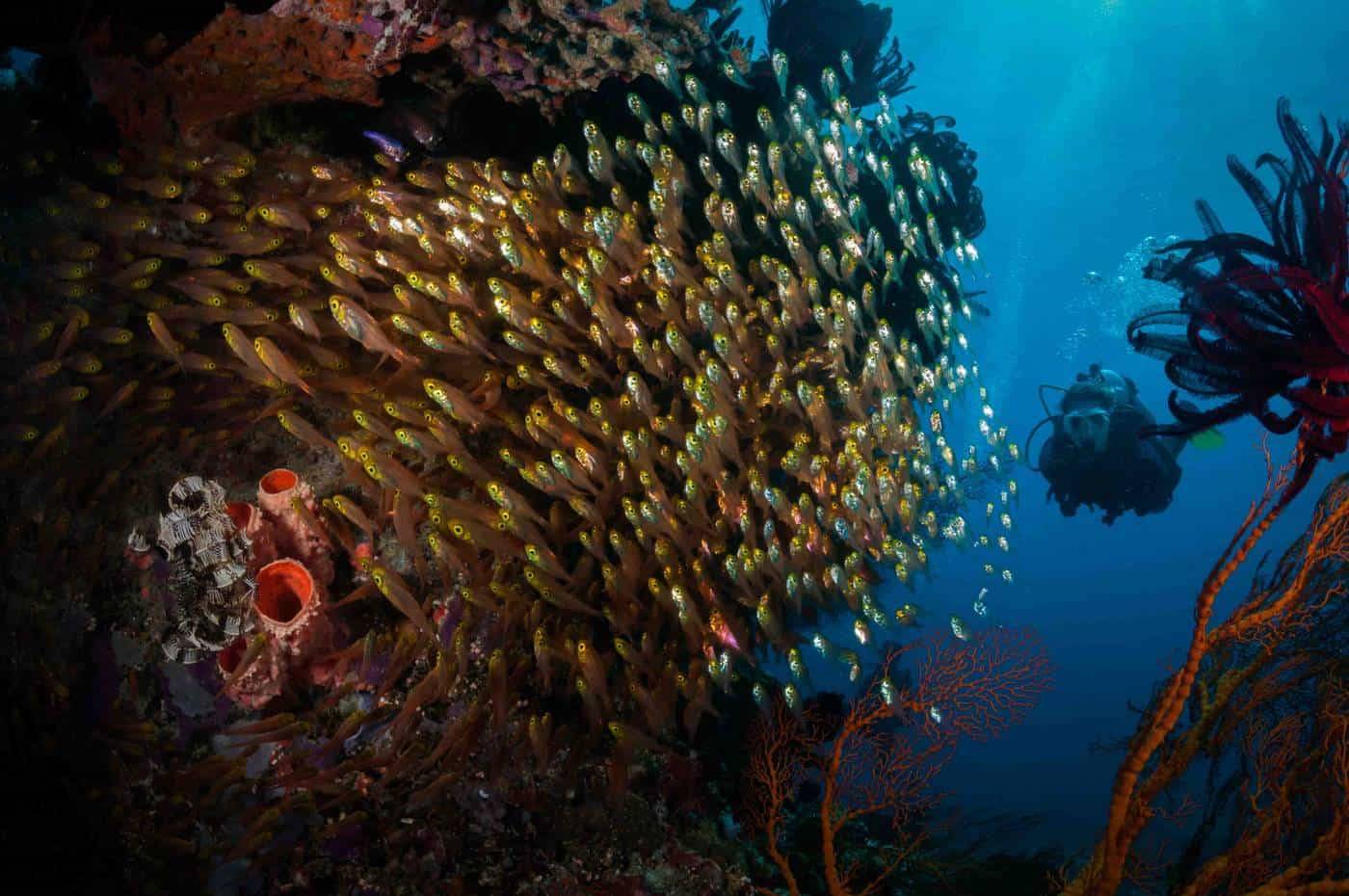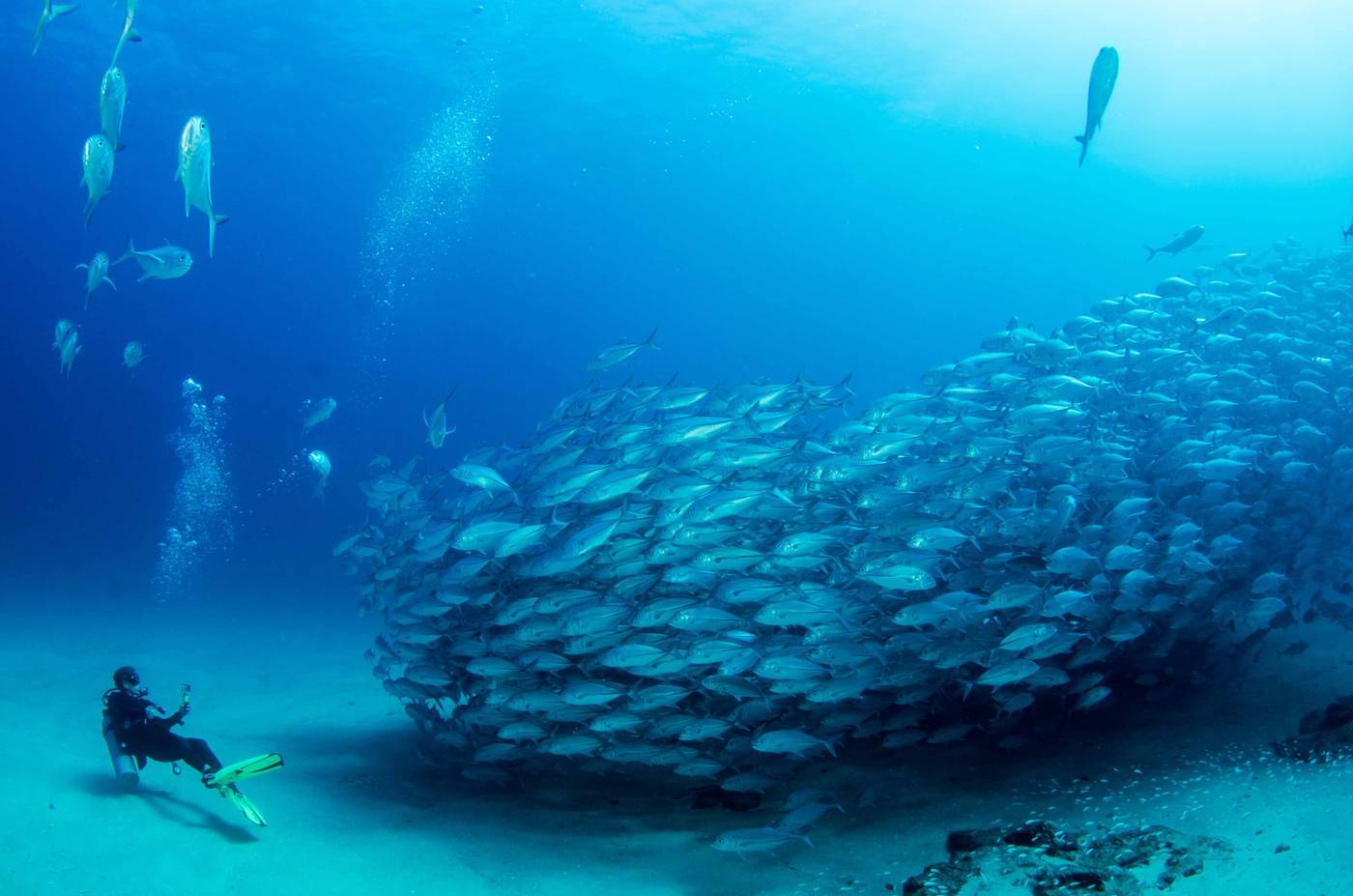
A COMPLETE GUIDE TO THE GREAT BARRIER REEF
Set off the northeast coast of Australia, an interconnecting series of some 3,000 coral reefs covers an area of about 350,000 square kilometres, making it larger than the whole Italy. The Great Barrier Reef is one of our planet`s natural wonders and the world`s most extensive coral reef system. It is not only the world`s largest UNESCO World Heritage Site and the only living structure on earth to be seen from outer space but also the most spectacular marine wilderness on the globe.

THE WOLRD`S LARGEST CORAL ECO-SYSTEM
This exceptional natural beauty is stretching for 2,300 km of Queensland`s coast and it runs through a number of different climates: from the Tropic of Capricorn to the southern coast of Papua New Guinea. It is made up of 3,400 individual reefs, including nearly 800 fringing reefs, coral islands, forested continental islands, coral cays, sandbars and mangrove systems linked by large lagoons.

The sea in tropical waters is commonly fairly clear because it has little in the way of nutrients. The coral reef, with their algae`s ability to convert sunlight into energy, is at the bottom of the food chain and supports one of the world`s most diverse eco-systems. More than 400 varieties of corals build different structures that act as anchors, protection and food for hundreds of marine species.

The Great Barrier Reef is of vital importance to the world`s eco-systems, containing a third of the planet`s soft coral species and mammals like humpback whales, dolphins and dugongs. Also, sponges, molluscs, thousands of types of tropical reef fish and hundreds of species of birds thrive on its abundance.
Scuba divers are lucky enough to enjoy this submersed wonderland; dazzling coral gardens of both soft and hard corals, limestone fortresses, countless shipwrecks, underwater canyons, anemones and giant mantas, seahorse and sharks, sea turtles, dolphins and whales.

DID YOU KNOW?
Coral Cays are low islands formed by the build-up of reef sediments. As the reef grows, hardy plants start to flourish in the sand, birds begin to settle down and the vegetated coral is then established and becomes a mini-ecosystem. Fully encircled by a coral reef and shallow waters, these little isles make perfect snorkelling spots.

1.THE SOUTHERN REEF ISLANDS
The southernmost end of the Great Barrier Reef is a humble fellow. It starts with small islands and tiny islets scattered in the waters of the Pacific, right between the Fraser Island and Rockhampton.
The reef becomes more obvious offshore from Gladstone – home to the Capricornia Cays National Park. The marine reserve comprises 241 coral cays that are encircled by mere reefs and coral gardens. The national park features endangered birdlife, diverse marine eco-system and only some of the cays are open to tourism.

Snorkelling, scuba diving, whale watching, sea turtle hatching and relaxing in the coral lagoons and their powdery-white sands are things to do, especially on the Lady Elliot, Lady Musgrave and Heron Islands.
TO GET THERE: Fly to Rockhampton. The islands can be visited by booking a ‘charter’ or a cruise or via a ferry from Rockhampton or Yeppoon.
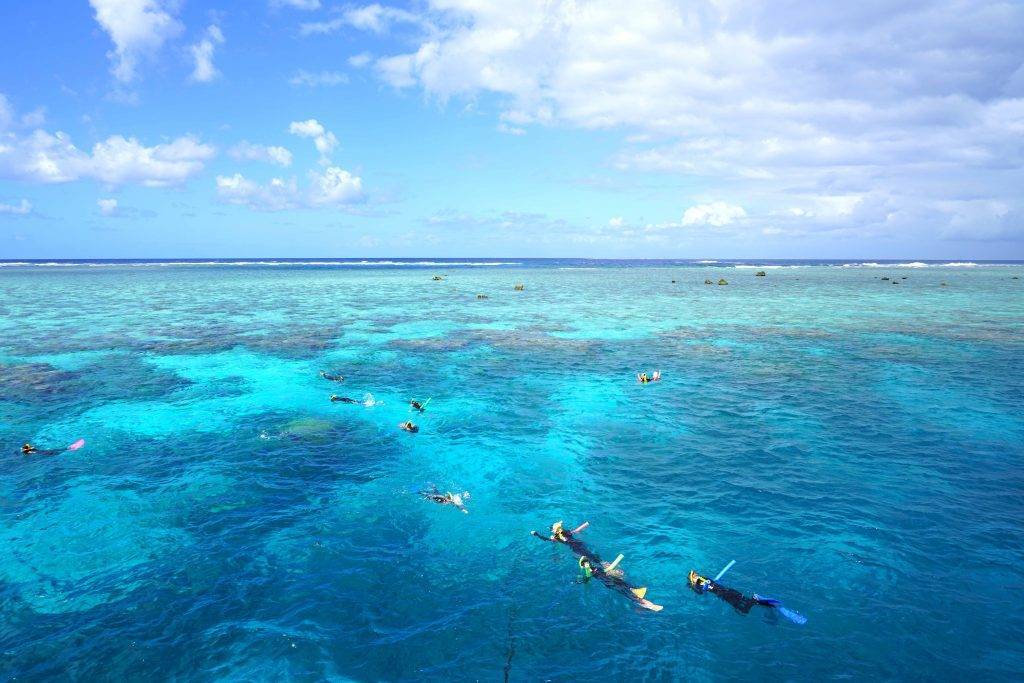
BEST DIVING & SNORKELLING SITES
- Lady Elliot Island – a splendid island and the southernmost coral cay of the Great Barrier Reef (composed of sand and corals), eco-resort, fantastic snorkelling and diving, turtles, whales, sharks, rare seabirds, access exclusively by seaplane from Bundaberg/Brisbane/Gold Coast/Hervey Bay
- Lady Musgrave Island – the only navigable lagoon, radiant coral gardens, turtles, reefs, manta rays, rainbow fish, extraordinarily clear waters perfect for snorkelling and scuba diving, camping permitted, the only access is via boat from Seventeen Seventy
- Heron Island – a coral cay (composed of sand and corals), encircled by 24 square km of the pure reef, excellent snorkelling, diving, nesting sea turtles, exotic birdlife, walking tracks, various tours (reef walking or coral submarine), gorgeous beaches and holiday resorts, access by boat from Gladstone marina or via seaplane from Gladstone airport
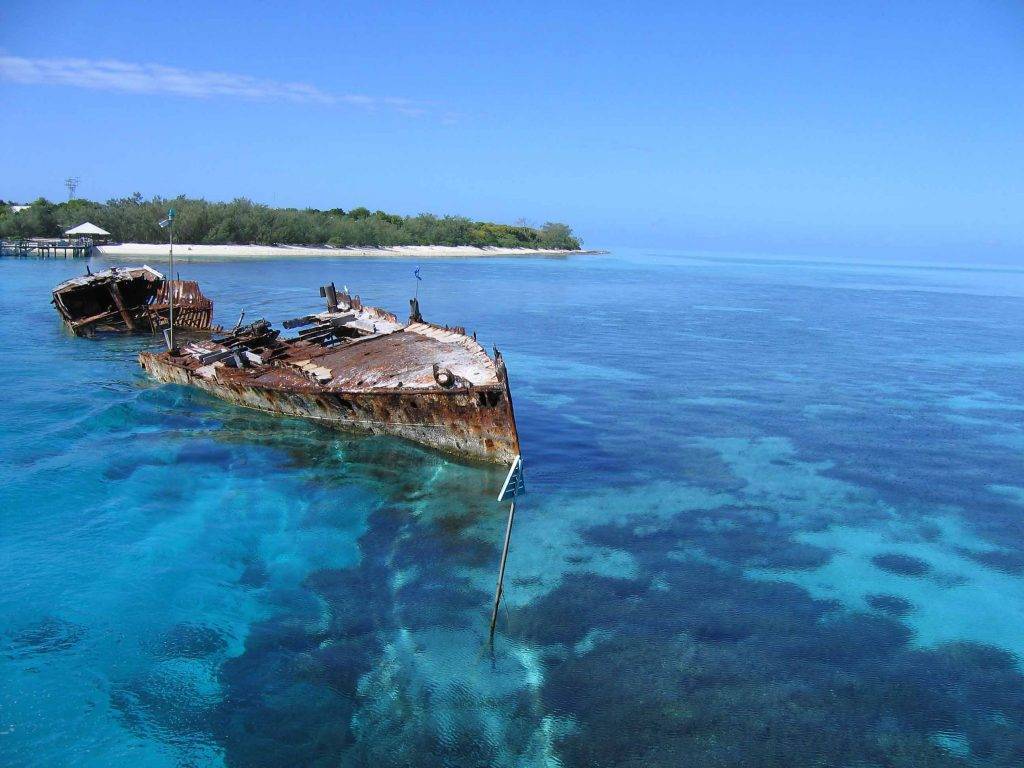
2.THE CENTRAL REEF ISLANDS
The 74 Whitsunday Islands lie just off the Queensland`s coast and are perfectly situated for exploring the Great Barrier Reef. The Whitsunday Island itself, the largest in the group, is a national park, as are many of the other islands either in whole or part. Here all you find are fabulous white sandy beaches, secluded bays, radiant marine life in the shallow tropical waters, dense green pine forests and heavenly peace, of course.
The highlights and the major attractions are the almost legendary Hill Inlet and the Whitehaven Beach – rated as the world`s best beach. The virgin 7 km long stretch consists of 98% pure white silica brought to the beach via prevailing sea currents over millions of years.
Many of the islands are privately owned or uninhabited, and due to the sailing and yachting popularity in the area, the whole surroundings often gives an impression that there are more people about at the sea than there are on land. Here, however, one will often need to exceed their budget.

THE WHITSUNDAY ISLAND RESORTS
The most visited islands in the marine park are Hamilton Island, Daydream Island, Long Island and Hayman Island – luxurious and expensive retreats with 5-star service. The islands are popular with honeymooners, wealthy holidaymakers, sailors, yachter and scuba divers.
Recently, the Molle Islands have opened up to the independent travellers who can appreciate their splendour at ‘reasonable’ price and stay at one of the islands` campgrounds.
TO GET THERE: Fly to Proserpine/Whitsunday Coast Airport (Australian mainland) and take a ferry from Airlie Beach to Hamilton Island, Daydream Island or the Molle Islands. Otherwise, fly directly to the Hamilton Island (Great Barrier Reef Airport). NOTE Most of the islands can be visited by booking a ‘bareboat charter’ or a cruise from any resort or a ferry from the mainland at the Airlie Beach/Shute Harbour or Mackay.

WHAT TO DO IN THE WHITSUNDAYS
- HAMILTON ISLAND – the most popular and spoilt island, brilliant infrastructure, airport, marinas, shops, restaurants, Golf Club, Yacht Club, luxurious accommodation, spa, massage, all kinds of water sports, snorkelling & diving
- DAYDREAM ISLAND – snorkelling at the Lover’s Cove, mini golf, open-air cinema, the Living Reef (man-made outdoor aquarium ), Stingray Splash
- LONG ISLAND – closest to the mainland, gorgeous walking tracks, secluded bays
- SOUTH MOLLE ISLAND – one of the more accessible to independent travellers and recently gained the reputation to be a ‘backpackers island’, close to the mainland, adventure travel resort, rainforest, secluded bays, white sandy beaches, birdlife, wildlife, marine life, snorkelling, campgrounds ( Sandy Bay, Paddle Bay, North Molle Island – Cockatoo Beach), access from Airlie Beach/Abel Point Marina
- WHITSUNDAY ISLAND – the largest island yet uninhabited, Whitehaven Beach is the most famous beach in the national park, rated as some of the most beautiful on earth, cruises can be booked, several campgrounds available (booking essential)
- LOVE HEART REEF – the famous heart-shaped coral reef seen from the air (scenic flights can be booked at any resort)
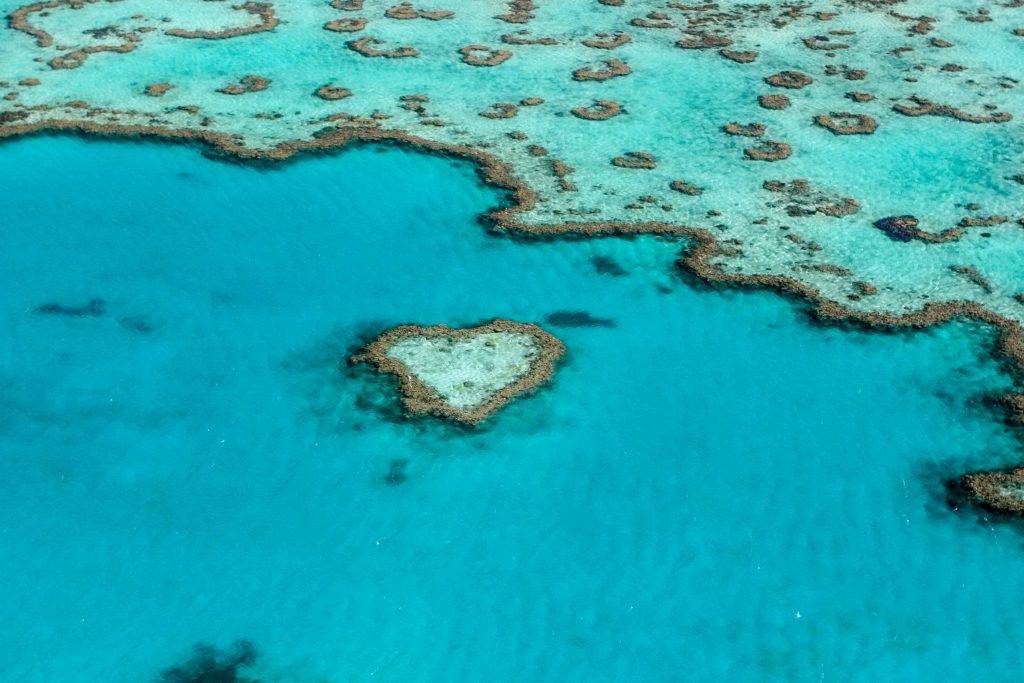
TOWNSVILLE & MAGNETIC ISLAND
The Great Barrier Reef is very much part of the local psyche in Townsville; the Marine Park Authority and James Cook University continually research and monitor the aspects of the reefs.
The famous Magnetic Island, known as the ‘Maggie’, is a haven for wildlife and marine life, and a paradise for tourists. With secluded beaches, lush national parks and a heritage-listed marine reserve, the island offers plenty of activities, ranging from trekking, diving and snorkelling to relaxing at the hotel pool. Angling and boating are particularly popular with the locals, whereas the huge native colony of koalas is every tourist`s highlight.
TO GET THERE: Fly to Townsville (all islands can be reached via ferry, organized boat tour, cruise or charter boat)

BEST DIVING & SNORKELLING SITES AROUND TOWNSVILLE
- SS Yongala Shipwreck – book an adventurous underwater expedition to the famous shipwreck (Alva Beach, 1.5 hr drive from Townsville)
- Hinchinbrook Island – Australia`s most extensive island national park and nature lovers paradise, sheer wilderness, cloud-covered mountains, rainforest and eucalypt forest, rocky headlands, secluded sandy bays, remote hiking tracks, scuba diving, snorkelling, sea kayaking, camping (access via ferry from Cardwell, 2 hrs drive from Townsville)
- Orpheus Island – dense rainforests, untouched beaches, submerged mountains, coral reefs, luxurious eco-retreats, sailing & yachting hotspot (access via charter boat or your own vessel from Lucinda, 2 hrs drive from Townsville)
- Magnetic Island Snorkel Trail – a perfect trip for non-deep sea divers, splendid marine life and corals at Nelly Bay & Geoffrey Bay (25 min by ferry from Townsville), Cockle Bay Reef is known for the ‘City of Adelaide’ shipwreck
- Moltke Dive Site – old cargo shipwreck is a wonderful spot for curious scuba divers at Nelly Bay (Magnetic Island, 25 min by ferry from Townsville)
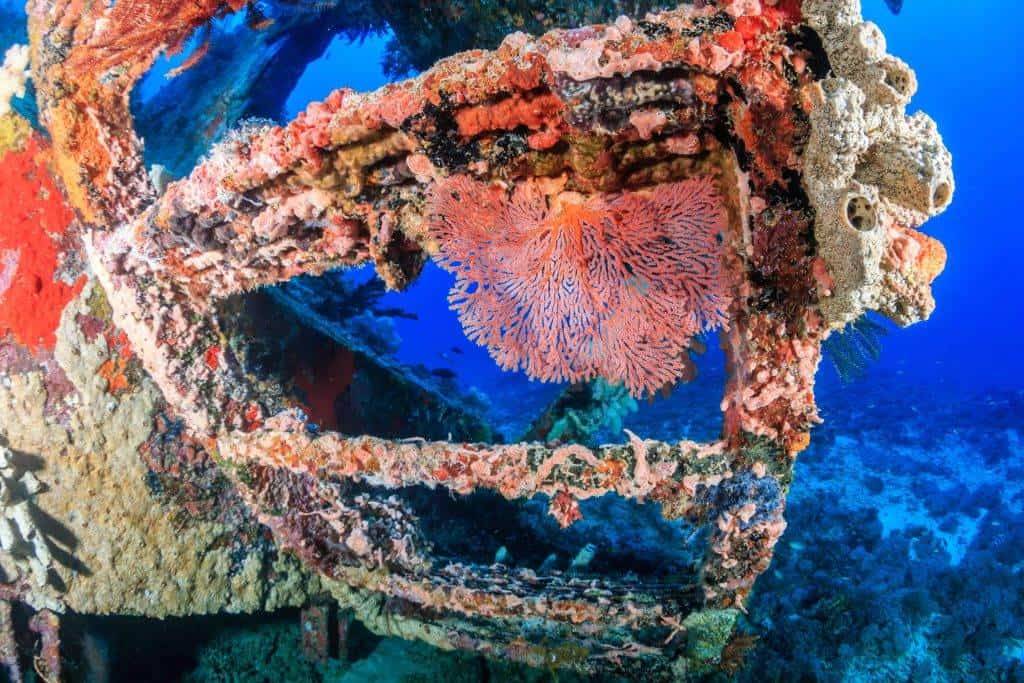
3.THE FAR NORTH QUEENSLAND ISLANDS (NORTH OF CAIRNS)
For lazy days yet busy nightlife, Great Barrier Reef just a stone`s throw away, the nearby posh resort town of Port Douglas and Daintree National Park, Cairns is the premier tropical destination in Queensland, ideal for both demanding tourist and independent travellers.
Here ocean means everything – it is the source of food and income. The local fishermen, tourists and sea creatures – they all enjoy the allure of the reef.

Cape York is the northernmost region of Australia, separated from Papua New Guinea by the narrow Torres Strait. The sparsely populated and untouched wilderness area is defined by rugged coastline fringed by the coral gardens of the Great Barrier Reef. Here you can find the least touched portion of the reef.
TO GET THERE: Fly to Cairns. Most of the islands can be visited by booking a ‘bareboat charter’ or a cruise from any resort or a ferry from the mainland at Cairns or Port Douglas.

BEST DIVING & SNORKELLING SITES NORTH OF CAIRNS
- Finding Nemo on a Cairns Snorkelling Tour – choose one of the myriads reef cruises in Cairns to find the legendary anemone clownfish (great for the beginners)
- Cairns Pontoon Tours – book one of these tours for the younger ones – special Marine World platforms are paced in the shallow waters of the Great Barrier Reef with protective nettings (ideal for families)
- Green Island – a splendid coral cay in the Great Barrier Reef and a popular one day trip from Cairns, (45 min by a catamaran from Cairns unless booked a cruise package), the major attraction is the Glass Bottom Boat, snorkelling & scuba diving
- Fitzroy Island – stunning mountainous island resort with luxurious accommodation, fringing reef, hiking trails, a variety of water sports activities, snorkelling and diving at Nudey Beach (45 min by a ferry from Cairns)
- Cairns and Port Douglas – Low Isles, Snapper Island, Michaelmas and Upolu Cay, Double Island (via an organized diving expedition or your own vessel)
- Cape York Peninsula – Lizard Island, Haggerstone Islands, Yorke Island, Torres Strait, Mer (Murray) Islands (the northernmost islands on the reef)– snorkelling at the coral cays & deep-sea diving at the outer reefs (via an organized diving expedition or your own vessel)

NOTE
The Great Barrier Reef makes the richest marine habitat on our planet and it is going to take vigilance and effort to ensure its future. Therefore, if visiting this magnificent natural wonder please leave it the way you saw it, so our future generations will also share the allure and mysteries submerged in the waters of the reef.
